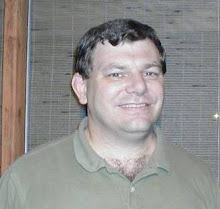Most people believe that the way to reduce congestion is to widen freeways. But every time freeways are widened, development goes farther out, creating congestion once again within a few years. There's no way to build yourself out of congestion.
An article a few months ago in The Oregonian cites the fact that Portland, Oregon has done better than its peers at limiting the growth of congestion, thanks to our urban growth policies and our investment in public transit.
It's not necessarily a good thing that the average motorists waits 38 hours in traffic, but the trend lines show that Portland is doing better than most cities, and better than many cities whose philosophy has been to build wide freeways and not limit sprawl.Rush-hour traffic clogs the nation's cities more than ever, but the Portland area appears to be fighting the growth in misery behind the wheel better than many regions.
Portland-area motorists were delayed 38 hours in 2005 because of rush-hour congestion -- about 14 percent less than the 44 hours a year average for the nation's top 85 metro areas.
Take away our mass transit, and the region's congestion delay would be 21 percent longer.
Our average commute here is 7 miles--one-third the distance of many other cities--and the Metro government has encouraged development of all levels of housing near all major employment areas. They've also introduced the concept that the best transportation system is one that has more than one choice in terms of mode of travel.
As a result, our light rail, streetcar, and bus lines (as well as our new aerial tram) carry enough people to reduce congestion by 21 percent.
Good public transit is not a socialistic plot to deprive people of the choice to drive. It's an option that many people actually find more convenient than driving. We will need to widen some roads, and even build a few roads, over the next 20 years. But I hope that the majority of investment continues to be on rail. With Peak Oil approaching and climate change accelerating, we need to provide options.

No comments:
Post a Comment